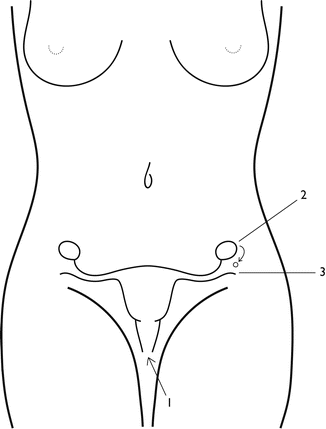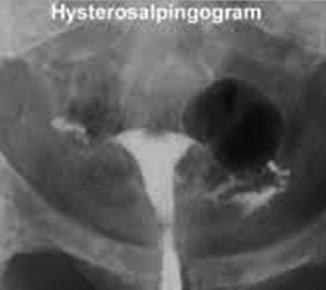and Paula Briggs2
(1)
Department of Obstetrics and Gynaecology, Monash University, Clayton, Victoria, Australia
(2)
Sexual and Reproductive Health, Southport and Ormskirk Hospital, Southport, UK
Definition
Failure to conceive after 12 months of unprotected sexual intercourse
Incidence
It is said that 15 % of couples have subfertility. This seems to be true for most of the world, unless there are pockets of problems peculiar for a particular population, where the incidence rates can be higher.
Aetilogy and Pathogenesis
Subfertility can be divided into the following potential causative factors (Fig. 16.1):


Fig 16.1
Three basic fertility parameters
SPERM- The right “number” of sperm have to be deposited, in the right place, at the correct time.
OVULATION- The woman has to release an egg
TUBES- The passages, cervix, uterine cavity and tubes have to be patent
MIXED – more than one factor
UNEXPLAINED (IDIOPATHIC) SUBFERTILITY
Transport problem
Fertilisation problem
Implantation problem
Clinical Assessment
History
If possible a couple should be seen together
Previous fertility history- both partners
Menstrual history
Medical History, including cervical smear history
Surgical History
Medications including alcohol, recreational drugs, and smoking
Family History, especially congenital abnormalities, endometriosis
Social History-
Sexual History- Intercourse timing and adequacy
Examination
Routine abdominal, speculum and vaginal examination. Opportunistic cervical smear if indicated
Investigations
Female
Infection screens- Rubella and ?Varicella Immunity (dependent on country)
Hormones: Mid luteal progesterone and oestradiol
If cycles irregular: FSH, LH, Prolactin, TSH
Male
Semen analysis on a specimen produced by masturbation
Antisperm antibodies
A semen analysis should always be performed before undertaking tubal assessment of the female. If normal, consider tubal assessment
Hysterosalpingogram (HSG)- (Fig. 16.2) An X-ray contrast test- cheap, widely available, painful, false positives and negatives, limited information.




